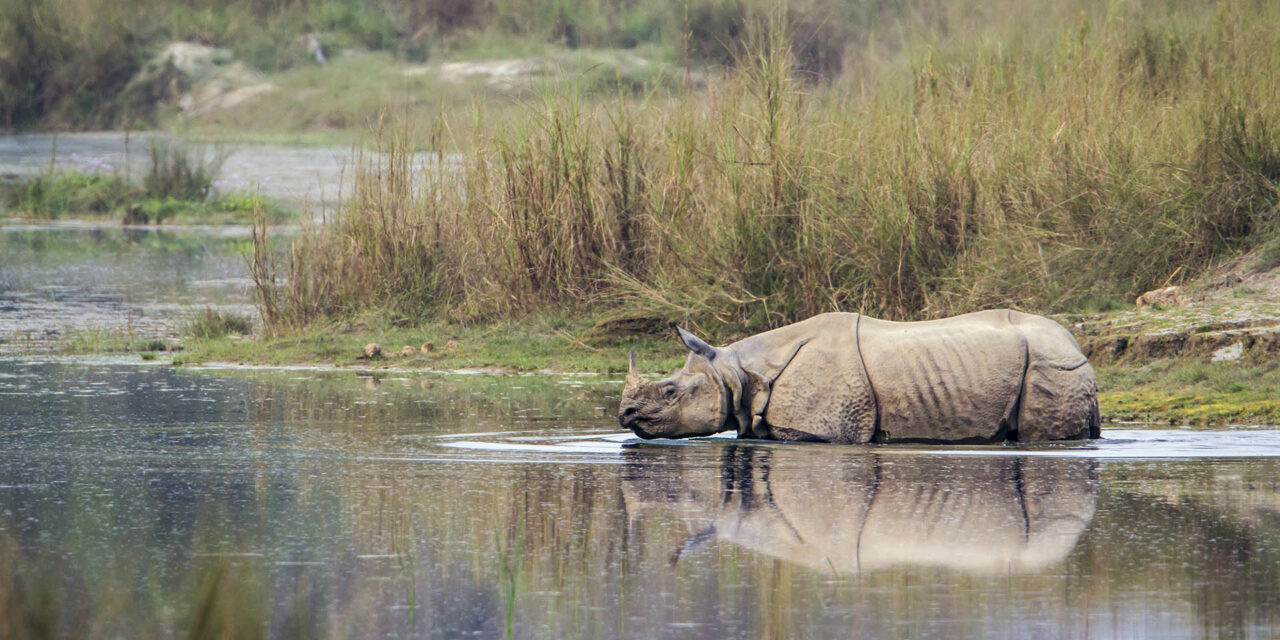Nepal, usually known for its dramatic mountains and cliff-side culture, has another side to its personality: a world filled with tigers and crocodiles, lazy rivers and grasslands. The Bardia National Park in the far west of Nepal is a haven for the nation’s rarest animals, sheltered in the shadow of the Himalayas.
Here, glacial waters run through the lowlands, and the impassable mountain heights keep the forests sated. The country’s mix of high and low altitudes and rainfall has given rise to the biodiversity of Bardia, Nepal’s largest and most undisturbed national park in the Terai region. At Bardia National Park nature lovers can spot one-horned rhinos and Bengal tigers, raft with river dolphins, and bask with gharial crocs.
Elephants, Rhinos, and Tigers
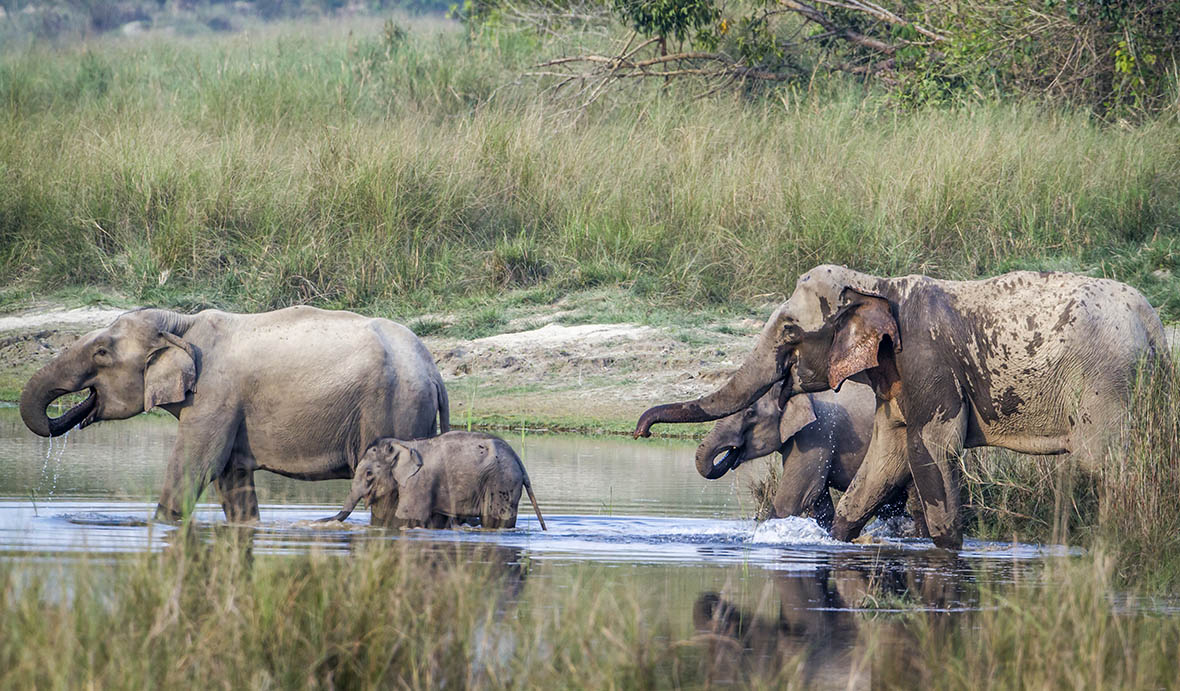
ABOVE: A family of elephants stomp through the tranquil lowlands of Bardia National Park.
The Asian elephant is one of the most remarkable mammalian specimens in the region – perhaps even the whole of Asia. Massive and mighty, the elephants of Bardia are a natural and cultural staple.
As for vantages from which to spot the wildlife of Bardia National Park, it is often said that one of the best ways to see the tigers and rhinoceroses is from the back of an elephant, which provide a near-treetop view and handily navigate the terrain. With that in mind, more animal-friendly minded travelers might want to give this a miss, the training and back-riding of the animals being a source of constant controversy.
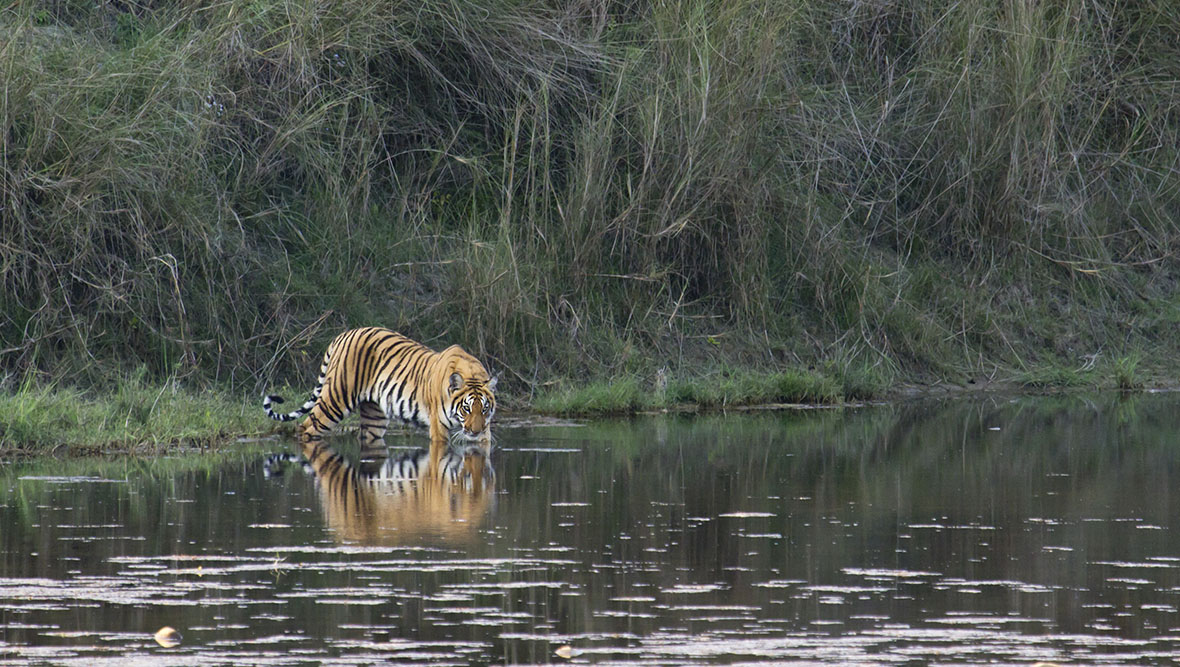
ABOVE: A tiger in the Rapti River. In April and May, thirsty tigers come to the water’s edge for a drink in the summer heat.
For those hunting for more rarified wildlife, the elusive Bengal tiger is perhaps the most sought after animal in Bardia – both rare and fearsome. When combining the neighboring Banke National Park, the Bardia-Banke Tiger Conservation unit extends more than 2,000 square kilometers.
As there are only a couple of dozen in the wild in Bardia, don’t get too downhearted at missing these majestic cats. Those hell-bent on a glimpse of this beast will want to visit in the summer heat of April and May. The key is to sit on the river with a knowledgeable guide and wait for the tigers to get thirsty.
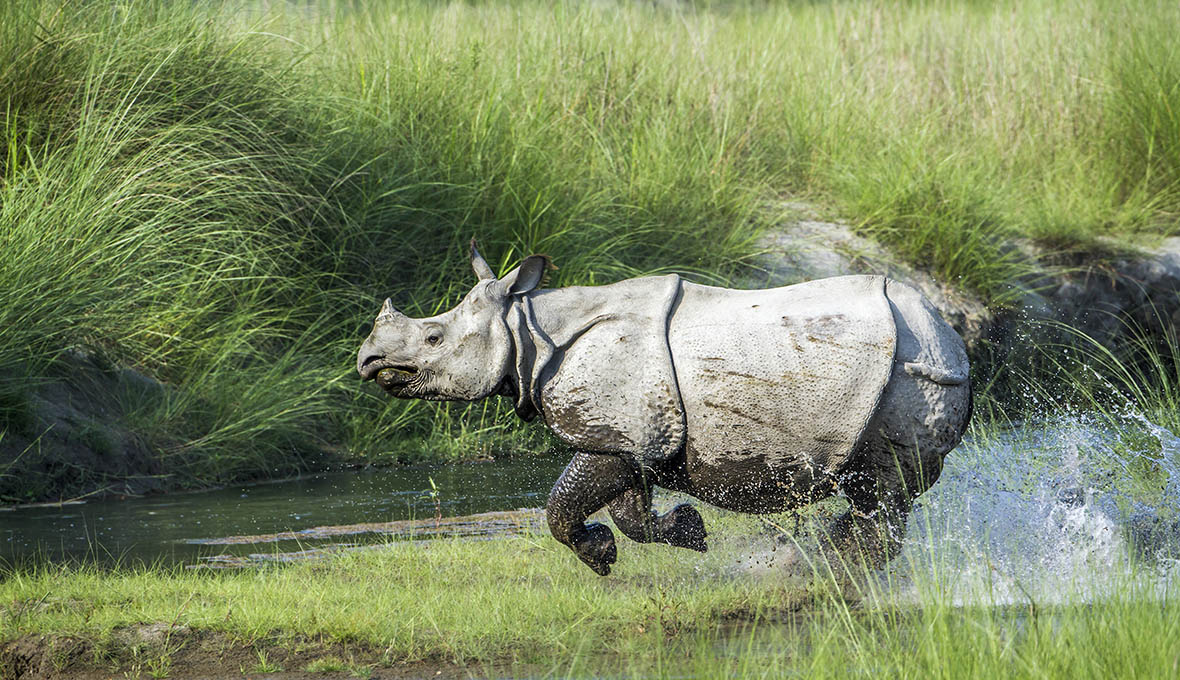
ABOVE: A one-horned rhino runs through the waters of Bardia National Park. These mighty animals are still prized by poachers and are protected in places like Bardia.
The one-horned rhinos are a more likely sight than their feline Nepalese neighbor because there are more, they’re less shy, and – well, they’re kind of hard to miss. There are more than 600 of them to be found throughout Nepal. When tracking down the rhinos, it’s important to remember to be respectful; their hearing is better than their eyesight, so try not to frighten these peaceful, armored beasts.
Conservation of these fiercely poached animals is still a serious concern. In Bardia National Park they number fewer than 30 by some accounts.
Bardia is home to hundreds of species of animal, from the swamp deer to the Bengal bustard – a complete safari experience. Other important macro-fauna in the area include the carnivores leopards and Tibetan wolves. The life here is made possible by the climate, conservation, and, of course, the rapids running from the Himalayas to the lowlands.
Riding the River
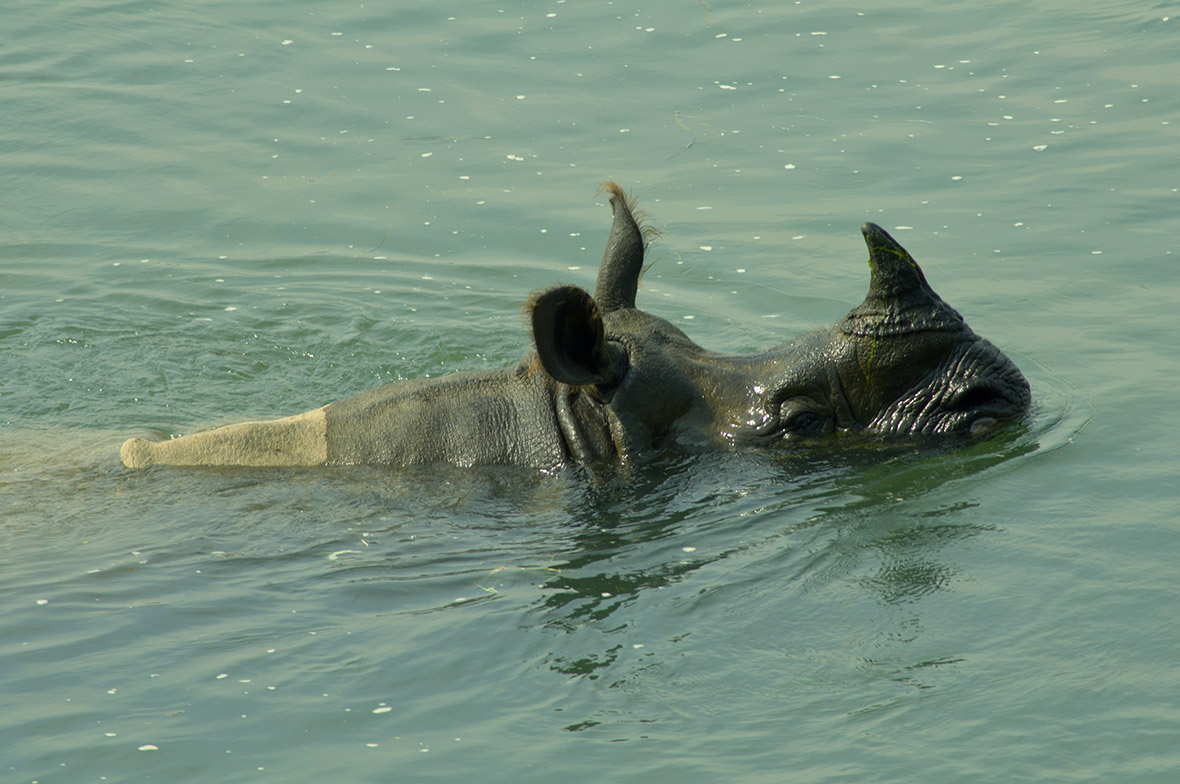
ABOVE: A rhino swims through the Rapti River, a life-rich river extending up into the Himalayas.
Besides on foot, truck, and the back of an elephant, rafting through the rapids makes for an exciting trip through the Terai Tarai, or “moist land,” region at the base of the Himalayas. It’s also travelers’ best shot at finding thirsty wildlife.
With a landscape comprised of marshy grasslands, savannas, and steaming jungle terrain, the breathtaking Karneli River is a pleasant river cruise. Up river, the rapids of the Rapti and Karneli can be quick – though nothing like the Trisuli or other famous Himalayan rapids – but for Bardia, the waters are calm, lazy, and filled with wildlife.
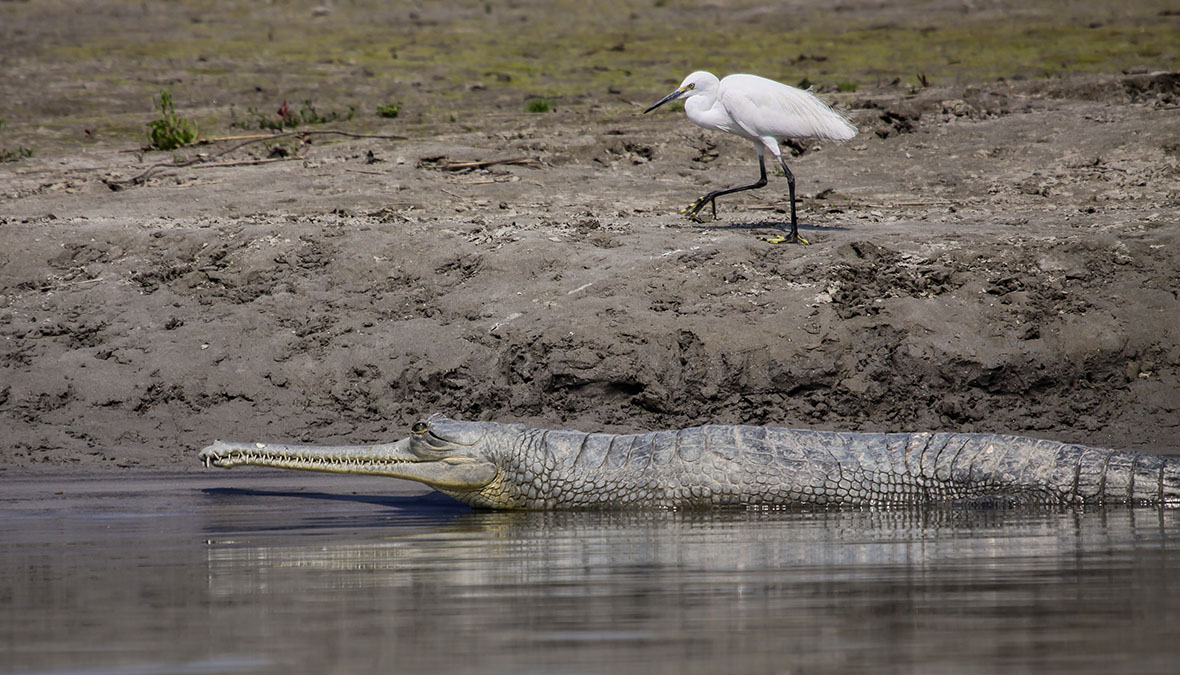
ABOVE: A gharial crocodile basks next to a crane in the rivers of Bardia National Park.
That said, these rivers aren’t without their adrenaline; regardless of how placid the river may look, among the gathering wildlife at the river’s edge are the crocodiles.
Of the odd reptiles of the region, the gharial, with its characteristic long jaws and bizarre bulbous snout, is a strange sight to behold indeed. It looks quite comical on land – less so as the reptilian beast moves steady and streamlined through the water.
Binoculars at the Ready
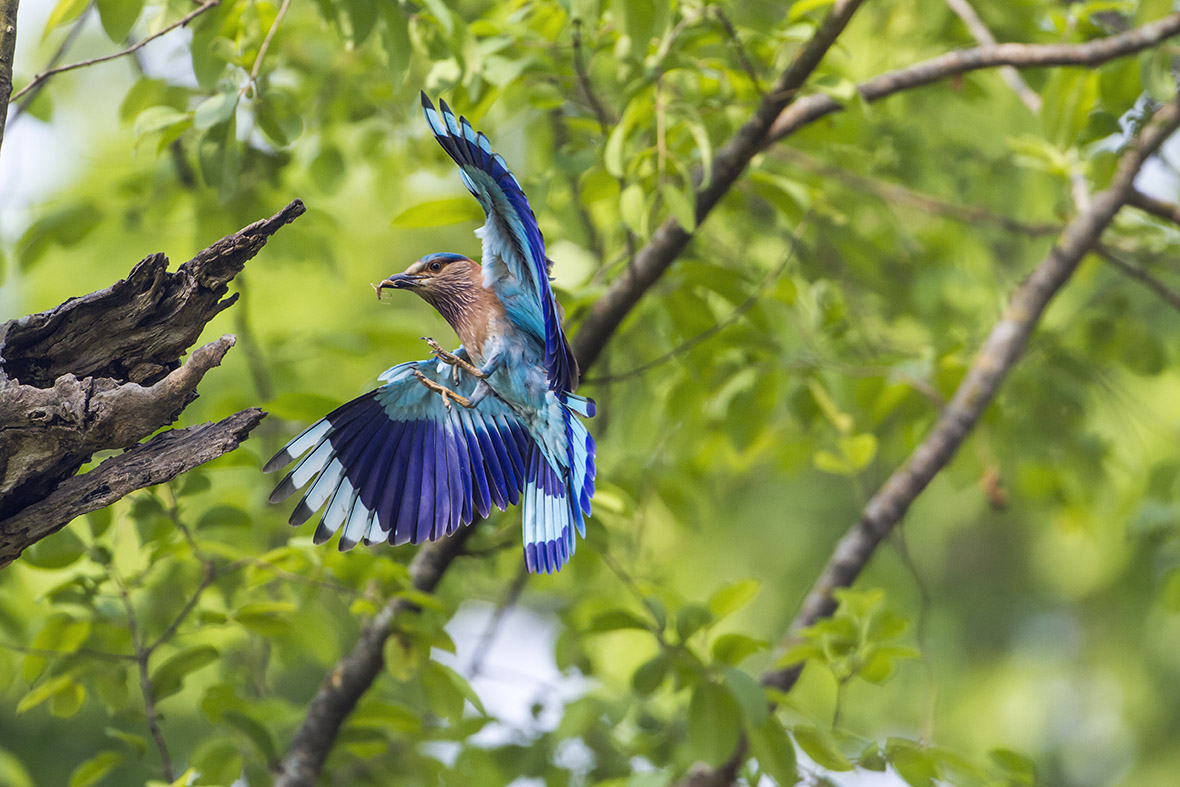
ABOVE: A common Indian roller bird mid-flight, carrying its prey. More than 10 percent of all the bird species on earth can be found in Nepal.
Bardia National Park is one of Nepal’s better-kept secrets, too remote for the tourists drawn by the cliff sides and mountains of the Himalayas. The forests and grasslands seem a world away from the lifelessness of Everest and are a haven for birdwatchers. Indeed, Nepal plays host to nearly 10 percent of the world’s recorded species.
Hundreds of species of birds migrate through the roof of the world each year, and Bardia supports a wealth of life year round, including the endangered white-rumped vulture and the native bar-headed geese. Lovers of birds of prey should keep an eye out for the brahminy kite and the elegant purple heron.
From the skies to the river dolphins in the streams, the natural landscape of Nepal is a surprising oasis of wildlife tucked away from the Himalayas. The far west of Nepal seems like a different planet from the mountains in the east, a land more gentle to life. It’s not always easy to spot the best of Nepal’s wildlife. But, it’s always worth it.


